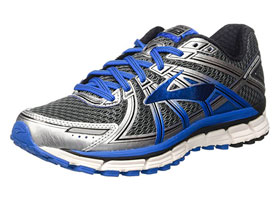Running is a high impact activity which affects the feet, legs, and lower back. Thus, it’s not uncommon to find your back hurting after running. This is especially true of those who have existing back issues.
The Three Categories of Lower Back Pain
Lower back pain can be broken down into three categories, each with their own symptoms and treatments.
- Acute Pain – This type of short-term back pain usually lasts less than 3 months and is most often due to an injury or overexertion. A lower back sprain from lifting or twisting is a common culprit.
- Chronic Pain – This is a long-term type of back pain that lasts at least 3 months but can last for years or even decades. Chronic pain is often associated with spine and disc related issues such as herniated discs, sciatica, scoliosis, or spinal stenosis.
- Lifestyle Pain – This type of pain is caused by normal lifestyle choices that contribute to the pain. Such things as obesity, prolonged sitting, poor posture, smoking, or even leading a sedentary lifestyle can cause this.
How Running Affects the Lower Back

As you run, the impact of your foot on the ground sends shockwaves up your leg and into the spine. The spinal discs absorb much of this shock when they’re healthy, but a damaged disc can contribute to the pain rather than reduce it. Muscle or bone trauma can also be affected by these impacts.
Having a good pair of running shoes is one of the best investments you can make if you have some sort of back pain.
Should I Run With Lower Back Pain?
This depends largely upon the type of back pain you suffer from. Many forms of lifestyle pain will actually benefit from exercise. You can also safely run if you have most forms of arthritis, or plantar fasciitis.
Acute and chronic pain are entirely different matters and can lead to more serious injury if not treated quickly. Conditions such as degenerative disc disorder can be exacerbated by frequent running.
Additionally, you should be tested if you develop sciatica, which is a type of pain that’s often accompanied by numbness or tingling in the leg. When in doubt, always consult a physician.
Back Pain WHEN Running

Running is a high-impact workout that can result in pain for people suffering from conditions such as plantar fasciitis or arthritis. However, even individuals with no history of back pain can develop problems while on a run.
Poor balance can put a strain on the lower back, as can weak core muscles. These symptoms may occur early in your run or part way through and could be a sign to slow down.
Foot drop (where your foot doesn’t want to raise at the ankle due to muscle weakness) is a serious symptom and should be diagnosed immediately, as it can lead to nerve damage and may require surgery if not treated early on.
Always listen to your body, as it knows its own limitations, and take a break to stretch a little or treat the pain before it has a chance to become worse.
Back Pain AFTER Running

In many cases, this can simply be a sign that you’re overdoing it. However, it can be a major warning sign when you develop sciatica after a run. Drop to a lower impact form of exercise for a while and see a physician.
They may suggest a simple fix, such as using a home back stretcher or strengthening your core muscles. It may also lead to an early diagnosis for spinal injury of disease. Some acceptable low-impact alternatives to running are:
- Swimming
- Using an elliptical trainer
- Using a mobile or stationary bike
- Rowing
Treating Back Pain After a Run
There are thankfully plenty of ways to reduce the risk of injury when your back hurts after running. A hot soak in epsom salts or a good heating pad can help loosen up generally sore muscles after a long run. Light stretching can also help prevent the rubber band effect of your muscles tightening up overnight.
Cold or ice packs can assist with some types of back or leg pain. Tylenol or Ibuprofen can temporarily reduce the pain and any swelling caused by injury. At worst, rest your legs for an extra day to give the muscles time to recover.
Inversion therapy to decompress the spine from all the pressure that it’s put on by running is often recommended. Recently, many people have been having success treating post-running pain with a Quell device.
Preventing Back Pain Before it Starts
The good news is that an active lifestyle can actually reduce the risk of back pain, which is why professional runners rarely suffer back issues. Building up your core muscles helps distribute your weight and improve balance. Light weight lifting is a good way to do this.
A warm up/cool down regiment of stretches and exercises that loosen muscle tension are a great way to prevent injuries and alleviate the risk of pain in the legs or back. Recording your running sessions will also help to diagnose your running posture so you can correct as needed.
Finally, always take a day to rest between runs (or any workout involving specific muscle groups) to heal up any minor tearing, as overdoing it is one of the biggest causes of lower back pain when running.
Adam
Latest posts by Adam (see all)
- Running and Lower Back Pain (Before, During, and After Running) - July 1, 2019
- Benefits of Swimming Pool Exercises for Back Pain - March 20, 2019
- Care Options for Seniors With Back Pain - September 4, 2018

